Shocking Truth 1: It’s More Expensive Than You Think

Shocking Truth: The Camino Can Add Up – It’s Not As Cheap As It Seems
Sure, the Camino de Santiago is often seen as a budget-friendly pilgrimage, but the costs can add up quickly. Albergues (pilgrim hostels) range from €8 to €20 per night, and while that might seem affordable at first, multiply it by 30+ nights, and it becomes a significant expense. Then there’s food—while you can find affordable meals, eating out daily (even with a pilgrim menu) can add up fast. And don’t forget about snacks, coffee stops, and those occasional splurges on nicer accommodations when you need a break from dorm beds.
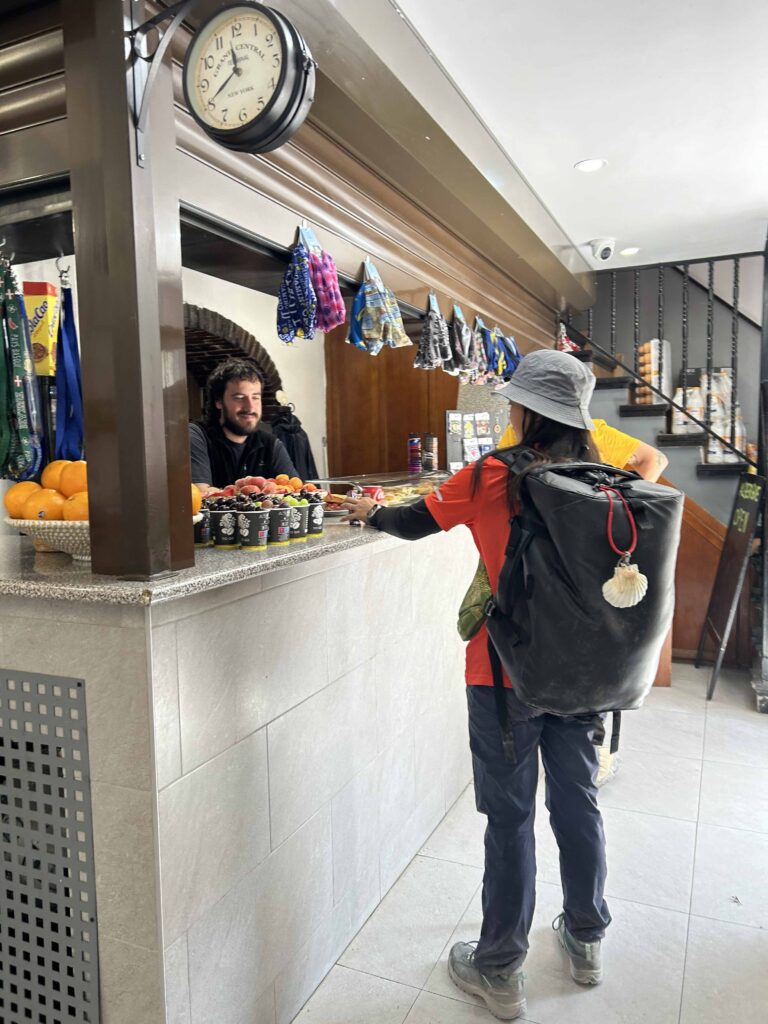
Shocking Truth 2: Pilgrim’s Meals – Big Portions & Totally Shareable
Shocking Truth: Pilgrim Menus Are a Steal, But Beware of Huge Portions
Pilgrim menus are a great deal, usually priced between €10-€15 for a three-course meal with wine. The portions? Massive! If you’re not a big eater, consider sharing with your Camino buddy to save money and reduce food waste. You’ll often find yourself with enough food for two meals, so sharing can make your budget go further.
Shocking Truth 3: Wine & Beer Are CHEAP (Like, Shockingly Cheap!)
Shocking Truth: Spain’s Alcohol Prices Will Blow Your Mind
If you’re coming from countries where alcohol is pricey, Spain will blow your mind. A glass of wine for €1.50? A beer for under €2? Even better—some regions have free-flow wine with meals. And yes, there’s even the famous wine fountain at Bodegas Irache, where pilgrims can fill up their bottles for free (though let’s be honest, it’s mostly for the experience). It’s a dream come true for budget-conscious pilgrims who want to unwind after a long day of walking. The quality is great, and the affordability makes it easy to indulge in Spain’s rich wine culture without breaking the bank.
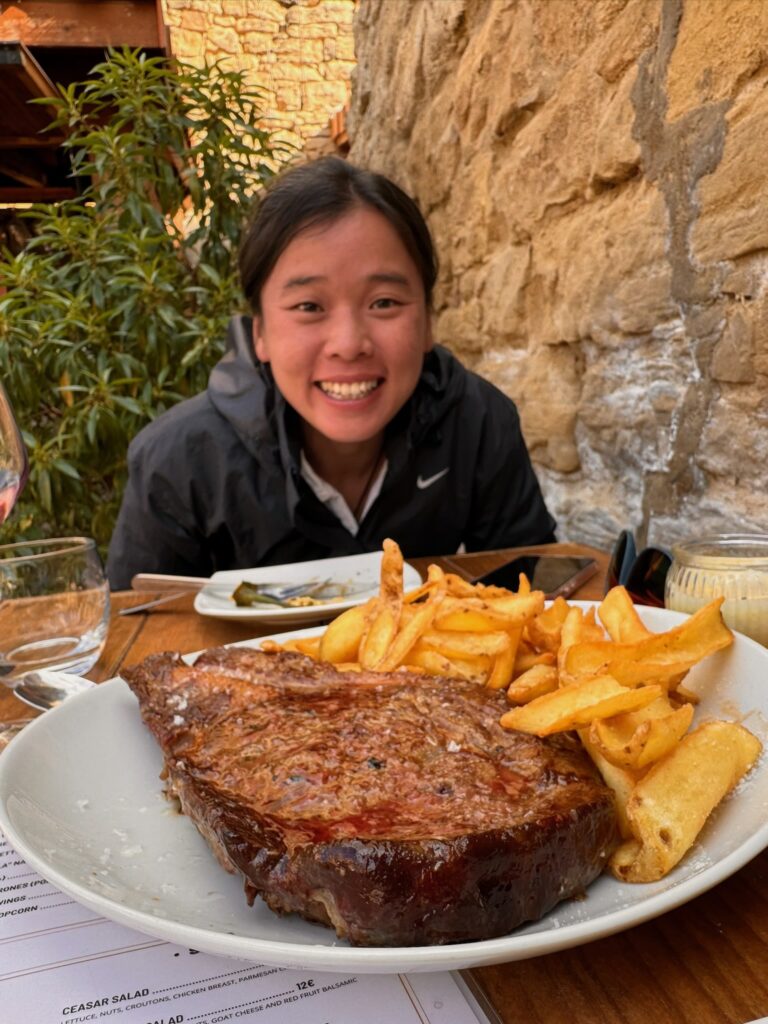


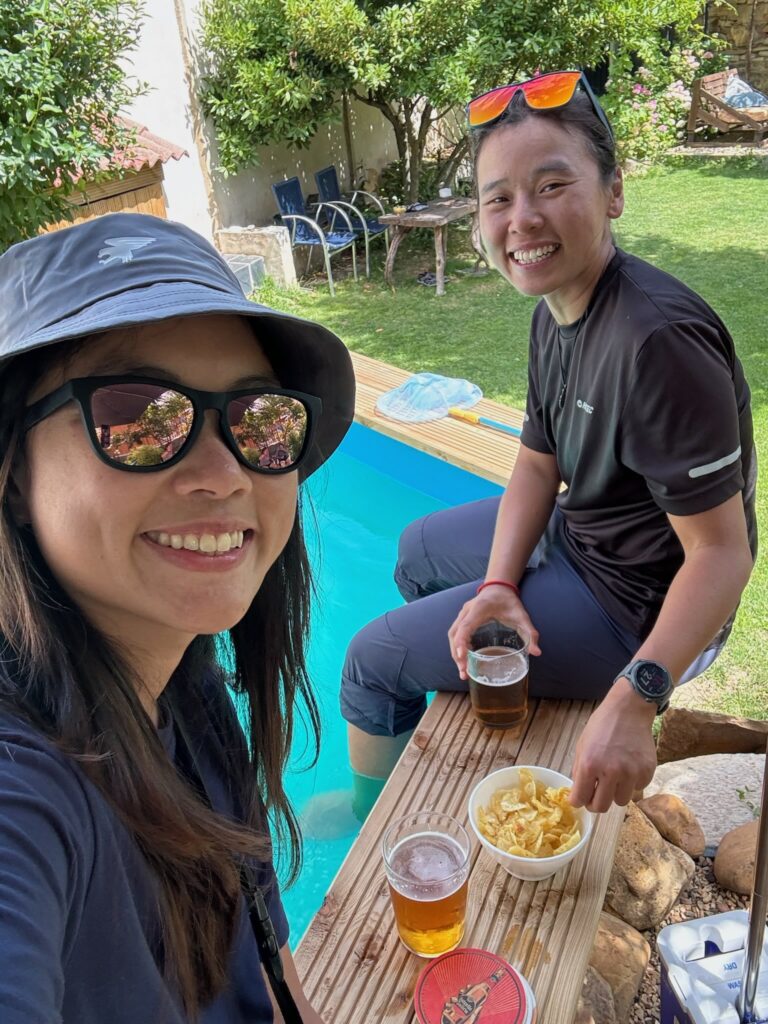
Shocking Truth 9: Coffee Is NOT the only Ultimate Fuel - It's POTATOES
Forget about the energy drinks and sugary snacks you might expect to see in the backpack of an average hiker. In Spain, it’s all about coffee—specifically, café con leche to start your day, followed by another boost in the mid-morning, and often a quick espresso or cortado when you stop for a break.
But coffee isn’t the only thing you’ll find keeping pilgrims fueled during their pilgrimage. The humble potato also plays a significant role. One of the most iconic dishes you’ll encounter along the Camino is the tortilla española, a delicious, thick omelet made primarily from eggs and potatoes. It’s served hot or cold, as a snack, a light meal, or even as part of a picnic. You’ll find it in almost every town, often sliced and ready to be enjoyed with a café con leche.
The combination of rich coffee and the ever-present tortilla española gives the Camino a unique, energy-fueled rhythm. Every morning, pilgrims gather at small local cafés, sipping their café con leche and chatting about their journey, then head off for another day of walking, stopping mid-day for another round of coffee or a tortilla break.
So, while you might expect to see people relying on sports drinks or granola bars to stay energized, the truth on the Camino is that it’s all about coffee and potatoes.

Shocking Truth 4: Racism Exists (Even on the Camino)
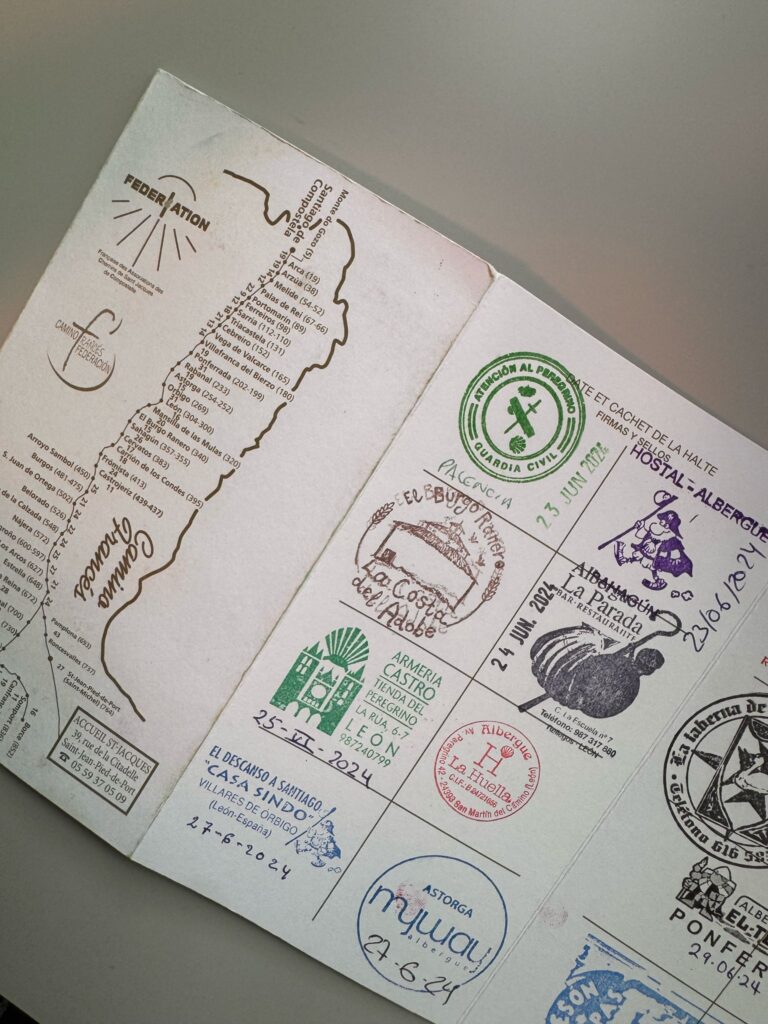
The Camino is a place of unity, but let’s keep it real—racism exists here too. Some pilgrims from non-Western countries may experience stares, rude remarks, or even be ignored in conversations. While most people are welcoming, it’s something to be aware of, and unfortunately, it’s not talked about enough.
During our journey on the Camino de Santiago, we had a personal encounter with racism at one of the albergues, an experience that was both disappointing and eye-opening. Although the Camino is widely celebrated as a space of unity and spiritual growth, it is not immune to issues like discrimination. We later reported the incident to the tourist police, which, though difficult, felt necessary to ensure the matter was addressed and to contribute to creating a more welcoming environment for all pilgrims. We even got a very unique stamp on our Camino credentials from the tourist police as a result of the report! Reporting these incidents is vital for ensuring that the Camino remains a place where everyone, regardless of their background, can walk in peace and unity. By sharing our experience, we hope to raise awareness of this issue and encourage future pilgrims and albergues to foster a more inclusive and supportive environment for all who walk the path.
Shocking Truth 5: You Don’t Need to Speak Spanish… But Some People Expect You To
Technically, you CAN walk the Camino de Santiago without speaking a word of Spanish. The trail is well-marked with clear signs, and many albergue owners and pilgrims along the route understand English, especially in larger towns. However, the reality is that some locals—particularly in smaller villages or more rural areas—might expect you to make an effort to speak Spanish. While they may not be fluent in English, a few key phrases can go a long way in making your interactions smoother and friendlier. Simple greetings like “Hola” (Hello) or “Gracias” (Thank you) acan help break the ice and create a positive connection with the locals. Even if you don’t speak Spanish fluently, making the effort to try can lead to better service, warmer interactions, and a deeper sense of respect from those you encounter on your journey. So, while it’s not strictly necessary to be fluent, understanding the basics and showing a willingness to engage in the local language can enhance your Camino experience.
Shocking Truth 6: The Locals Are Not Always Welcoming
Shocking Truth: Not Every Local is Thrilled About the Constant Stream of Pilgrims
While many towns along the Camino de Santiago thrive on the tourism brought by pilgrims, not every local is thrilled about the constant stream of visitors. Some are understandably tired of the overcrowding, noise, and sometimes disrespectful behavior, especially during peak season when the trail is busiest. We met plenty of locals who were warm and welcoming, eager to share their towns and stories with us, but we also encountered others who seemed indifferent or even annoyed by the constant flow of pilgrims passing through. Who can blame them? After all, when your small town becomes a daily pit stop for hundreds of tired, loud travelers, it can start to feel less like a peaceful home and more like a tourist attraction. While most pilgrims are respectful, it’s important to recognize that the impact of tourism, especially in small rural communities, can be overwhelming for some locals. Just as pilgrims are on a journey, so too are the people who live in these towns, and it’s essential to maintain a mutual respect for one another’s space and experiences.
Shocking Truth 7: Big Notes Are Not Preferred
Shocking Truth: Spain Doesn’t Always Love Large Bills
You’d think that Spain, being part of the EU, would be perfectly fine with accepting €50 or €100 bills, right? Well, not always! Many small cafés, albergues, and shops along the Camino de Santiago won’t accept large bills or will make a fuss about it. This is mainly because smaller businesses often don’t have enough cash on hand to provide change for large bills, especially in rural areas where cash flow is limited. Additionally, larger bills are more prone to counterfeiting, and small shops are wary of accepting them due to the risk. They also prefer working with smaller amounts of cash because it’s easier for them to manage. This can be particularly frustrating when you’re in a small town or at a coffee stop, where the transactions are often more casual. To avoid any hassle, it’s always a good idea to carry smaller notes and coins. Not only will this help you avoid awkward situations, but it’ll also make things easier when using vending machines, paying for small-town purchases, or stopping for a quick coffee. Keep your wallet stocked with smaller denominations to ensure smooth sailing during your Camino journey!
Shocking Truth 8: The Last Leg Is Crowded & Messy – We Almost Had Nowhere to Sleep in Sarria
Shocking Truth: The Camino Vibe Shifts After the 100km Mark
Once you hit the 100km mark (from Sarria to Santiago), the vibe of the Camino completely changes. This is the minimum distance required to receive the coveted Compostela certificate, so it attracts a flood of short-distance walkers, school groups, and tour groups. As a result, the trail becomes significantly more crowded, and albergues fill up quickly. We almost found ourselves without a place to sleep in Sarria due to the rush of pilgrims. If you’re walking during peak season, it’s crucial to plan ahead. Booking your accommodation in advance or starting your day early will help ensure you get a bed. The increased foot traffic might change the pace of your journey, but with a little preparation, you can still enjoy the experience and avoid the stress of scrambling for a spot to stay. Are you Team Book Ahead or Tean Wing It? > Read more about this here!
Shocking Truth 10: Toes & Feet Are the Main Topics of Conversation
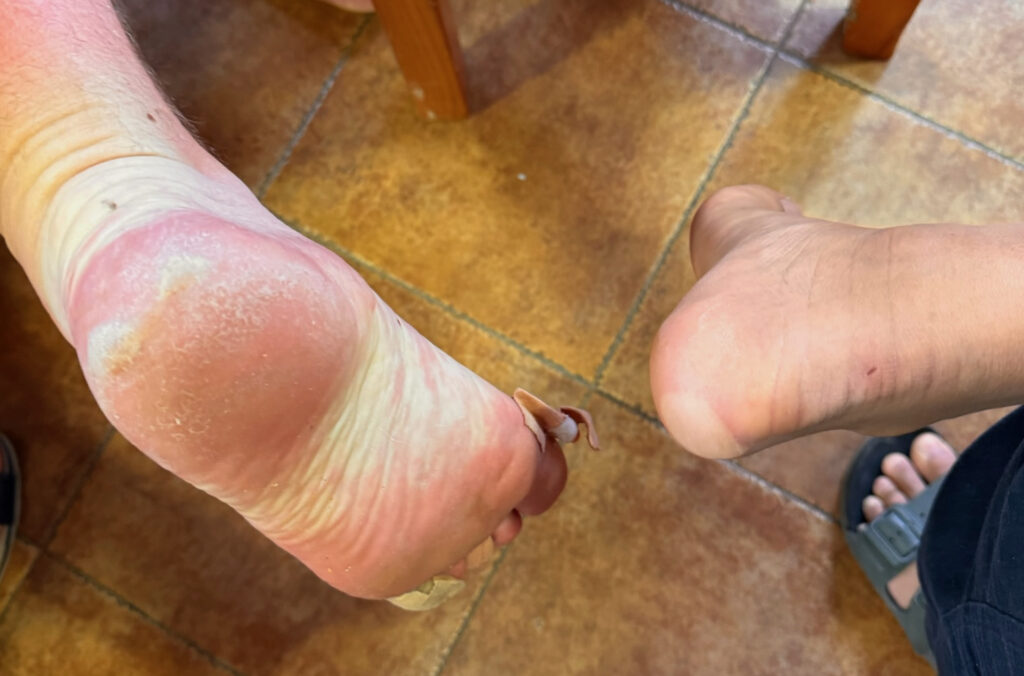
On the Camino de Santiago, your feet quickly become your most valuable asset. Within days, every pilgrim becomes obsessed with blisters, sore muscles, and preventing foot pain. Conversations at albergues often revolve around foot care hacks, sock recommendations, and horror stories of lost toenails. What starts as a casual mention of a blister soon turns into detailed discussions on ointments, blister bandages, and ways to prevent chafing. It may sound strange, but trust us—you’ll talk about your feet way more than expected. The Camino can be tough on your body, and your feet bear the brunt of it. Take care of them early, and seek advice from fellow pilgrims. After all, your feet are the ones carrying you every step of the way.
Shocking Truth 11: People Are Surprised That Singaporeans Speak English
Shocking Truth: English Is Singapore’s First Language, but Many Don’t Know It
A surprising number of people we met had no idea that English is Singapore’s first language. We lost count of how many times people asked, “Wow, how do you speak English so well?” or assumed we learned it as a second language. Some even tried speaking to us in Mandarin or assumed we wouldn’t understand them! It was a reminder of how little some people know about Singapore, and honestly, it made for some hilarious conversations. Despite being a global city, Singapore often surprises people with its cultural diversity and unique linguistic landscape, and it was funny to see their reactions when we cleared up the confusion.
Final Thoughts:
The Camino de Santiago is full of surprises—some amazing, some frustrating, and some just downright shocking. While it’s an unforgettable journey, it’s definitely not all sunshine and smooth paths. From unexpected foot pain and crowded albergues to encounters with different locals or the need for constant foot care, there are plenty of realities that nobody talks about—but ones you’ll definitely experience. It’s a journey that will test your endurance, patience, and resilience. If you’re planning to walk the Camino, prepare yourself for the highs and lows. These truths might surprise you, but they’ll only make your experience more authentic and memorable.
